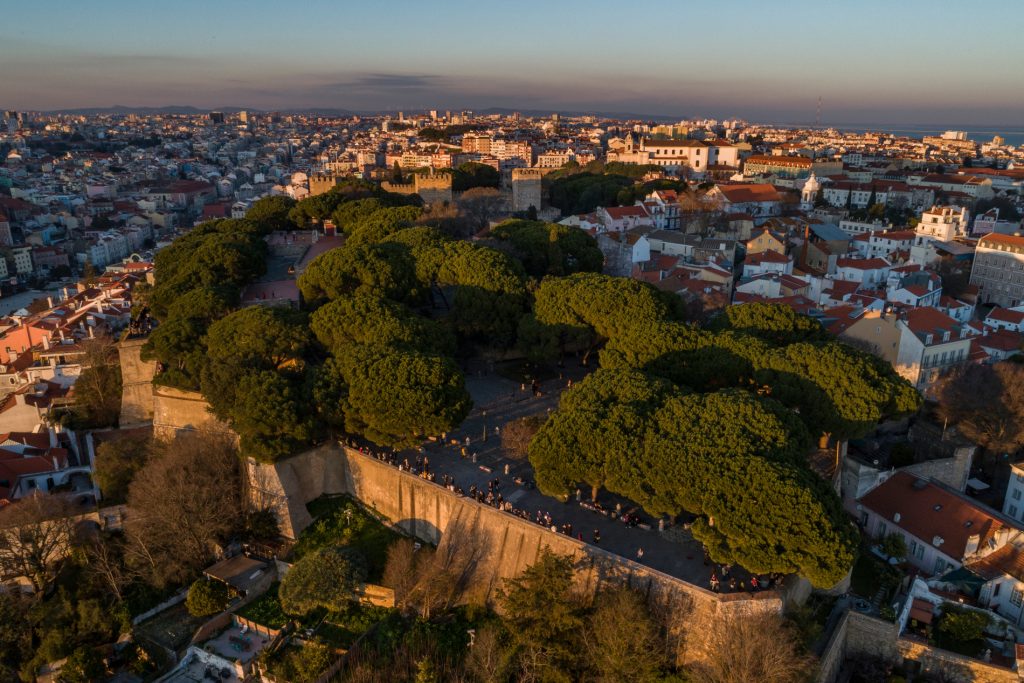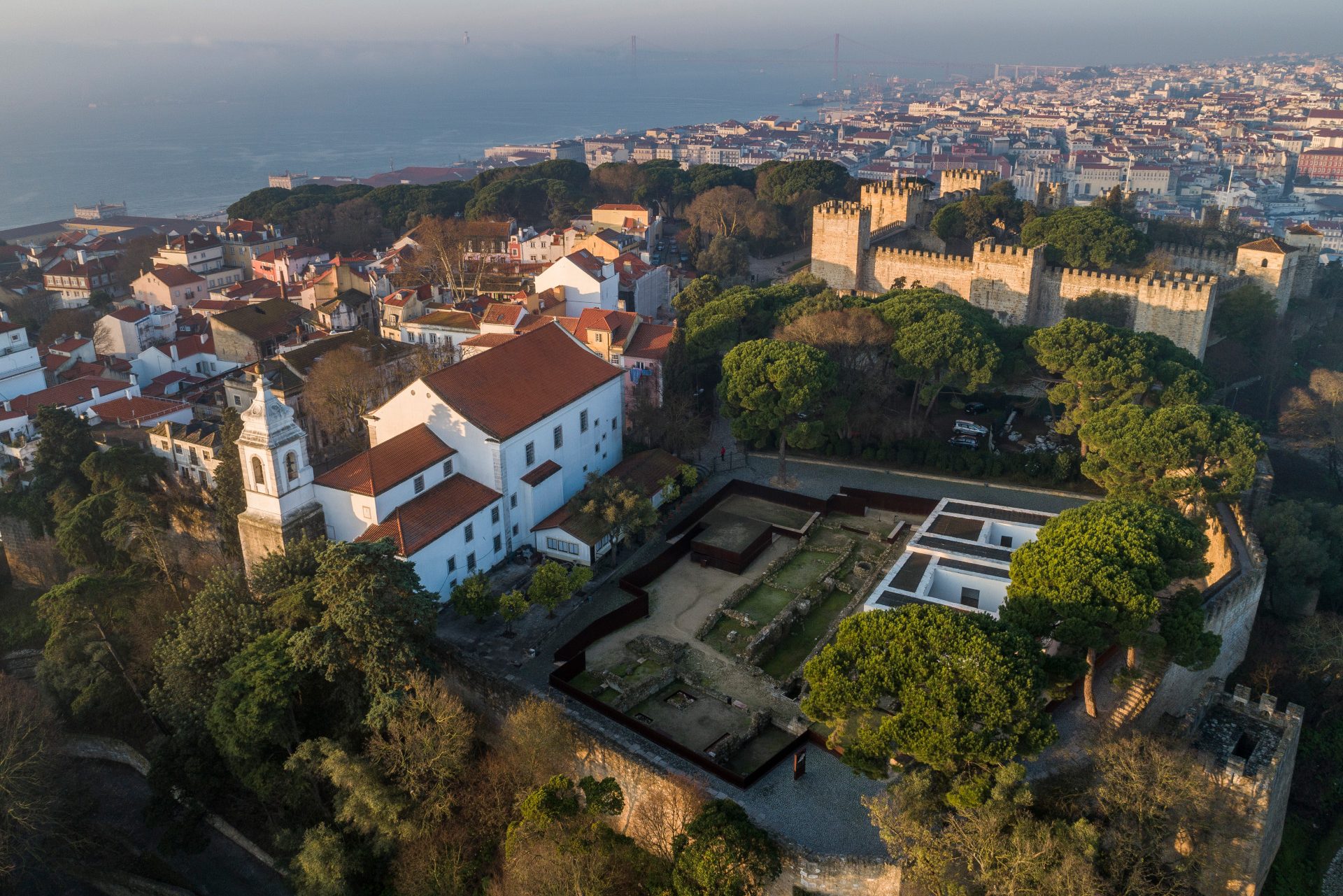Flora
Did the castles of the past have as many trees inside and around them as they do today? No, because if they had, an attacking enemy would have been able to conquer the fortress much more easily.

The planting of trees only took place at Castelo de S. Jorge after the 1940s, when the monument lost its military role for good and major works were carried out, giving it the appearance it has today.
In the 1950s, architect Gonçalo Ribeiro Telles designed a garden that would become a sustainable part of the hill’s existing environment and constitute a reference point for the entire city.
With the assistance of agronomist Pulido Garcia, the space was gradually dotted with different, mostly native, tree species, such as olive trees (olea europaea var. europaea), stone pines (pinus pinea), cork oaks (quercus suber), orange trees (citrus x sinensis), the Mexican cedar (cupressus lusitanica), the carob (keratonia siliqua), the black mulberry (morus nigra) and the Mediterranean cypress (cupressus sempervirens).
Other species, such as the silk floss tree (ceiba speciosa) or the jacaranda (jacaranda mimosifolia), which can be found in the Place-of-Arms are undoubtedly foreign. They come from South America and their canopy contrasts starkly with the canopy of stone pines. These are two trees of exceptional aesthetic value because of the intense colour of their blossom.
